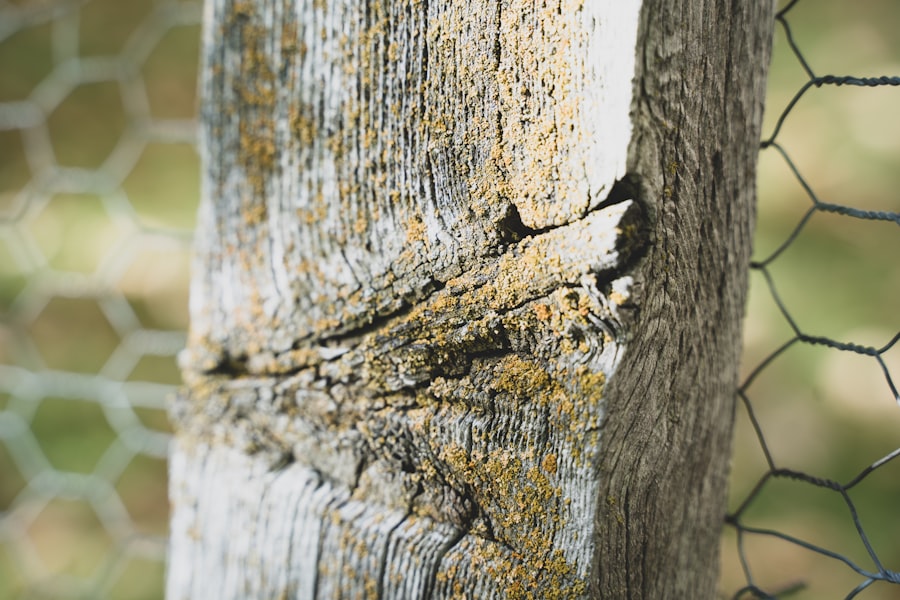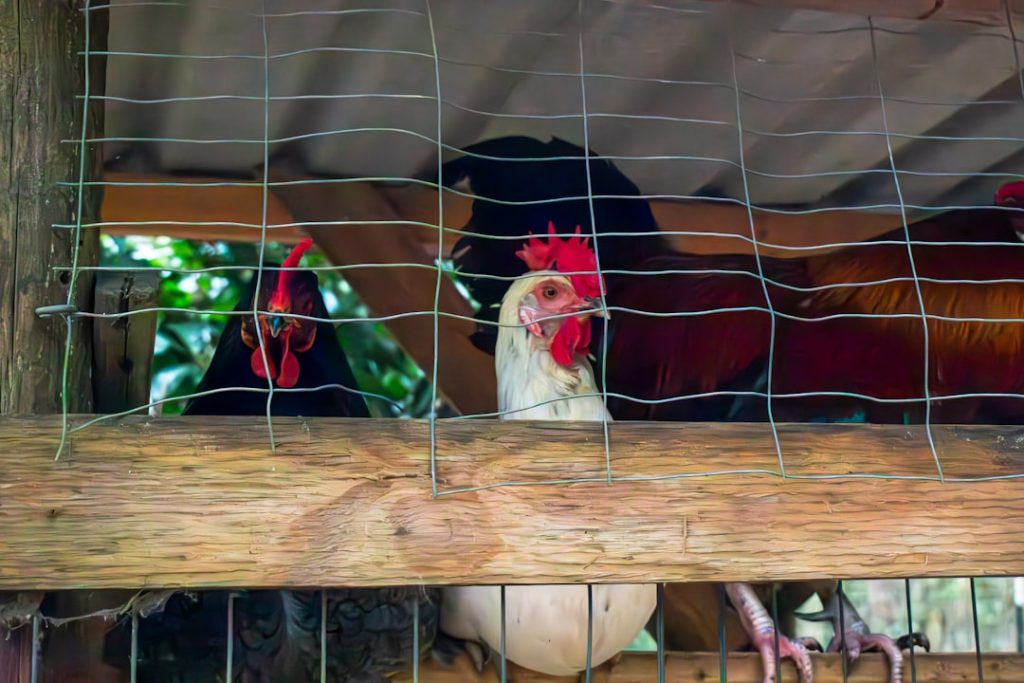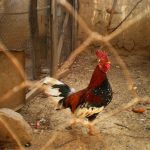Chickens getting stuck on fence corners is a common problem for poultry owners. This issue arises when chickens attempt to navigate through tight spaces or sharp angles in fencing, resulting in them becoming trapped. Several factors contribute to this problem:
1.
Natural curiosity: Chickens have an innate tendency to explore their environment, which may lead them to investigate fence corners. 2. Escape behavior: When threatened by predators, chickens may seek refuge in tight spaces, including fence corners.
3. Fence design: Narrow corners or obstacles in the fencing can impede chicken movement and increase the likelihood of them getting stuck. 4.
Overcrowding: In confined spaces with too many chickens, stress and anxiety may cause birds to seek out secluded areas like fence corners. 5. Poor maintenance: Improperly maintained fencing with sharp edges or protruding wires can snag chickens as they navigate corners.
Understanding these factors is essential for effectively addressing and preventing chickens from getting stuck on fence corners. Proper fencing design, regular maintenance, and appropriate stocking densities can help mitigate this issue.
Table of Contents
- 1 Assessing Your Fencing: Identifying Problem Areas for Chickens
- 2 Making Adjustments: Modifying Fencing to Prevent Chickens from Getting Stuck
- 3 Providing Alternative Routes: Creating Pathways for Chickens to Navigate Fence Corners
- 4 Ensuring Adequate Space: Considering the Size and Layout of Your Chicken Coop
- 5 Monitoring and Maintenance: Regularly Checking Fencing to Prevent Stuck Chickens
- 6 Seeking Professional Help: Consulting with a Poultry Expert for Further Assistance
- 7 FAQs
- 7.1 What are some common reasons why chickens get stuck on fence corners?
- 7.2 How can I prevent chickens from getting stuck on fence corners?
- 7.3 What are some signs that a chicken is stuck on a fence corner?
- 7.4 What should I do if I find a chicken stuck on a fence corner?
- 7.5 Are there specific breeds of chickens that are more prone to getting stuck on fence corners?
Key Takeaways
- Chickens get stuck on fence corners due to their natural instinct to seek shelter and the confined space in those areas.
- Assess your fencing for sharp corners, gaps, or obstacles that may cause chickens to get stuck.
- Modify fencing by rounding off corners, adding barriers, or using different materials to prevent chickens from getting stuck.
- Create pathways or alternative routes around fence corners to allow chickens to navigate more easily.
- Ensure adequate space in your chicken coop to prevent overcrowding and reduce the likelihood of chickens getting stuck on fence corners.
- Regularly monitor and maintain your fencing to prevent any potential areas where chickens could get stuck.
- Consult with a poultry expert for further assistance in identifying and addressing issues with chickens getting stuck on fence corners.
Assessing Your Fencing: Identifying Problem Areas for Chickens
Inspecting the Perimeter
Start by thoroughly inspecting the entire perimeter of your chicken coop and run, paying close attention to the corners and any potential obstacles that could hinder the movement of your chickens. Look for any sharp edges, protruding wires, or gaps in the fencing that could potentially trap or injure your chickens.
Evaluating Fencing Design and Condition
Consider the overall design and layout of your fencing, as certain configurations may create tight spaces that are difficult for chickens to navigate through. It’s also important to assess the condition of your fencing materials, as worn-out or damaged fencing can pose a greater risk of causing chickens to get stuck. Check for any signs of wear and tear, such as rust, corrosion, or loose wires, and make any necessary repairs or replacements to ensure that your fencing is secure and safe for your chickens.
Considering Fencing Dimensions
Furthermore, consider the height and width of your fencing, as taller or narrower fences may increase the likelihood of chickens getting stuck on fence corners. By thoroughly assessing your fencing and identifying problem areas, you can take proactive measures to modify and improve your fencing to prevent chickens from getting stuck in the future.
Making Adjustments: Modifying Fencing to Prevent Chickens from Getting Stuck

Once you have identified problem areas in your fencing that may lead to chickens getting stuck on fence corners, it’s important to make necessary adjustments to prevent this issue from occurring. One effective way to modify your fencing is by rounding off sharp corners and edges to create smoother transitions for your chickens to navigate through. This can be done by using PVC piping or other protective materials to cover sharp edges and create a more chicken-friendly environment.
Additionally, consider adding padding or cushioning to any potential obstacles in the corners of your fencing to minimize the risk of injury or entrapment for your chickens. Another important adjustment to make is ensuring that there are no gaps or protruding wires in the fencing that could potentially trap your chickens. Seal off any openings or holes in the fencing and secure any loose wires to create a more secure and obstacle-free environment for your chickens.
Furthermore, consider widening the corners of your fencing to create more open and accessible spaces for your chickens to move through. By making these adjustments to modify your fencing, you can significantly reduce the likelihood of chickens getting stuck on fence corners and create a safer and more comfortable environment for your poultry.
In addition to modifying your fencing, providing alternative routes for your chickens to navigate fence corners can help prevent them from getting stuck. One effective way to create pathways for your chickens is by installing additional gates or openings in the corners of your fencing. This allows your chickens to have multiple entry and exit points, reducing the likelihood of them getting trapped in one specific area.
Additionally, consider creating wider pathways by removing any unnecessary obstacles or clutter near the corners of your fencing to provide more space for your chickens to move through. Another option is to create designated pathways using barriers or dividers to guide your chickens through the corners of the fencing. This can be done by using temporary fencing panels or other materials to create clear pathways that direct your chickens away from potential problem areas.
Furthermore, consider adding visual cues such as brightly colored markers or flags to help guide your chickens through the corners of the fencing and prevent them from getting stuck. By providing alternative routes and creating clear pathways for your chickens to navigate fence corners, you can minimize the risk of them getting trapped and ensure a safer and more efficient environment for your poultry.
Ensuring Adequate Space: Considering the Size and Layout of Your Chicken Coop
Ensuring that your chicken coop and run provide adequate space for your poultry is essential in preventing them from getting stuck on fence corners. Start by evaluating the size and layout of your chicken coop and run to determine if there is enough space for your chickens to move freely without feeling confined or stressed. Consider factors such as the number of chickens you have, their breed, and their natural behavior patterns when assessing the space requirements for your poultry.
Additionally, consider the layout of your chicken coop and run, as certain configurations may create tight spaces or narrow corners that are difficult for chickens to navigate through. If possible, consider reconfiguring the layout of your fencing to create more open and accessible areas for your chickens to move through. This can be done by adjusting the placement of feeding and watering stations, nesting boxes, and other structures within your chicken coop to optimize space and minimize potential problem areas.
Furthermore, consider providing additional outdoor space for your chickens to roam freely, as this can help reduce overcrowding and alleviate stress that may lead them to seek out secluded areas such as fence corners. By ensuring that your chicken coop and run provide adequate space for your poultry, you can create a more comfortable and stress-free environment that minimizes the risk of chickens getting stuck on fence corners.
Monitoring and Maintenance: Regularly Checking Fencing to Prevent Stuck Chickens

Conducting Regular Inspections
Check for any sharp edges, protruding wires, or gaps in the fencing that may need immediate attention, and make any necessary repairs or modifications as soon as possible. This will help identify and address potential problem areas before they escalate into issues that could lead to chickens getting stuck on fence corners.
Maintenance Schedule
Consider implementing a regular maintenance schedule to ensure that your fencing remains secure and obstacle-free at all times. This can include tasks such as trimming overgrown vegetation near the fencing, removing debris or clutter that may obstruct pathways, and reinforcing any weak or damaged areas of the fencing.
Observing Chicken Behavior
Furthermore, consider observing the behavior of your chickens regularly to identify any patterns or tendencies that may indicate potential problem areas in your fencing. Pay attention to how they navigate through the corners of the fencing and whether they show any signs of hesitation or difficulty in certain areas. By staying vigilant with monitoring and maintenance, you can proactively prevent chickens from getting stuck on fence corners and ensure a safe and secure environment for your poultry.
Seeking Professional Help: Consulting with a Poultry Expert for Further Assistance
If you continue to experience issues with chickens getting stuck on fence corners despite making adjustments and modifications to your fencing, it may be beneficial to seek professional help from a poultry expert. A knowledgeable professional can provide valuable insights and recommendations tailored to your specific situation, helping you identify potential underlying causes and develop effective solutions to prevent chickens from getting stuck. A poultry expert can conduct a thorough assessment of your chicken coop and run, identifying any potential problem areas in your fencing that may be contributing to chickens getting stuck on fence corners.
They can also offer guidance on best practices for modifying and improving your fencing based on the unique needs of your poultry and their environment. Additionally, a poultry expert can provide valuable advice on optimizing space within your chicken coop and run, ensuring that it meets the necessary requirements for a safe and comfortable environment for your poultry. Furthermore, consulting with a poultry expert can provide you with access to specialized knowledge and resources that can help address more complex issues related to chicken behavior and fencing design.
They can offer recommendations on alternative routes, pathways, and layout configurations that are tailored to the specific needs of your poultry and can help prevent them from getting stuck on fence corners. By seeking professional help from a poultry expert, you can gain valuable insights and support that can help you effectively address issues related to chickens getting stuck on fence corners and ensure the well-being of your poultry. In conclusion, addressing the issue of chickens getting stuck on fence corners requires a comprehensive approach that involves understanding the underlying reasons behind this behavior, assessing and modifying fencing, providing alternative routes for navigation, ensuring adequate space within the chicken coop and run, regular monitoring and maintenance of fencing, and seeking professional help when needed.
By taking proactive measures to address potential problem areas within your fencing and creating a safe and comfortable environment for your poultry, you can effectively prevent chickens from getting stuck on fence corners and promote their well-being and safety.
If you’re looking for more tips on keeping your chickens safe and happy, check out this article on what kind of coop is best for chickens. It’s important to provide a secure and comfortable living space for your feathered friends to prevent them from getting stuck or injured.
FAQs
What are some common reasons why chickens get stuck on fence corners?
Chickens may get stuck on fence corners due to their natural curiosity, attempting to escape from predators, or trying to reach food or water on the other side of the fence.
How can I prevent chickens from getting stuck on fence corners?
To prevent chickens from getting stuck on fence corners, you can install corner braces or blocks to eliminate sharp angles, provide ample space for chickens to move around, and regularly inspect and maintain the fencing to ensure there are no gaps or protruding objects that could trap the chickens.
What are some signs that a chicken is stuck on a fence corner?
Signs that a chicken is stuck on a fence corner include frantic flapping and squawking, being unable to move or free itself, and visible signs of distress or injury.
What should I do if I find a chicken stuck on a fence corner?
If you find a chicken stuck on a fence corner, approach it calmly and carefully to avoid causing further distress. Gently free the chicken from the fence, check for any injuries, and provide necessary care or medical attention if needed.
Are there specific breeds of chickens that are more prone to getting stuck on fence corners?
While all chickens can potentially get stuck on fence corners, certain breeds that are more active or have larger body sizes may be more prone to getting stuck. It’s important to provide adequate space and fencing that accommodates the specific needs of the chicken breeds in your care.
Meet Walter, the feathered-friend fanatic of Florida! Nestled in the sunshine state, Walter struts through life with his feathered companions, clucking his way to happiness. With a coop that’s fancier than a five-star hotel, he’s the Don Juan of the chicken world. When he’s not teaching his hens to do the cha-cha, you’ll find him in a heated debate with his prized rooster, Sir Clucks-a-Lot. Walter’s poultry passion is no yolk; he’s the sunny-side-up guy you never knew you needed in your flock of friends!







